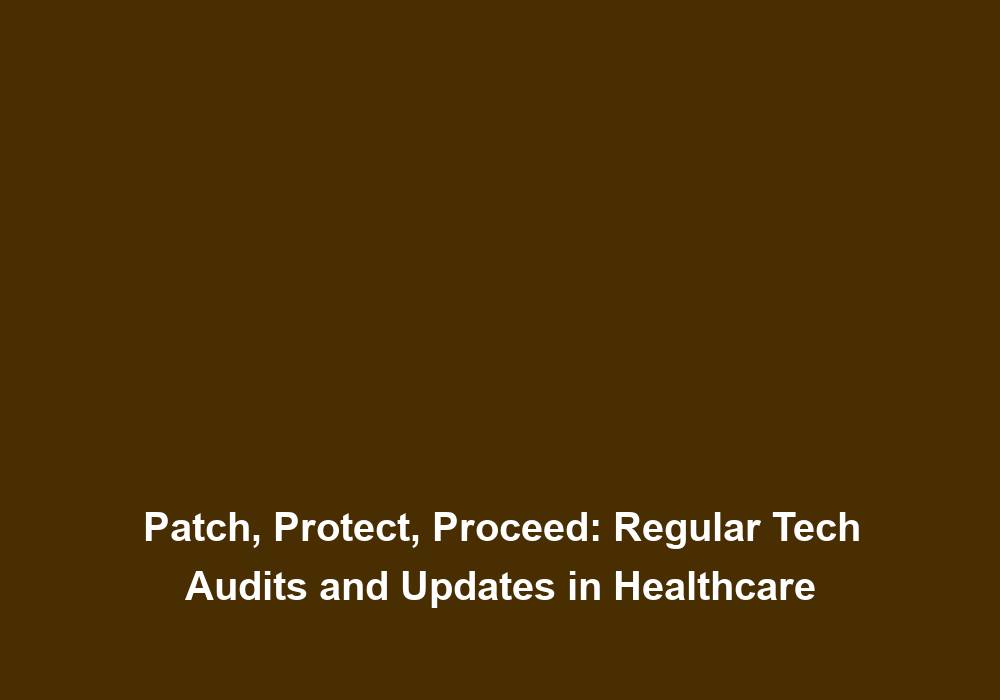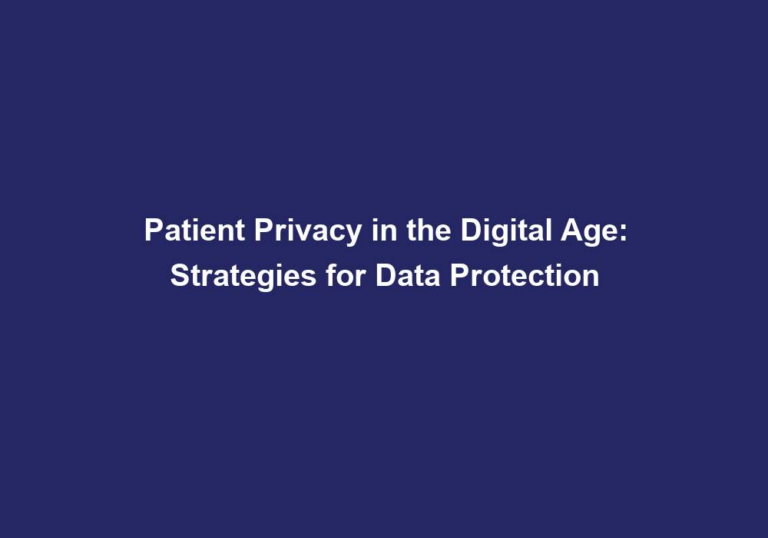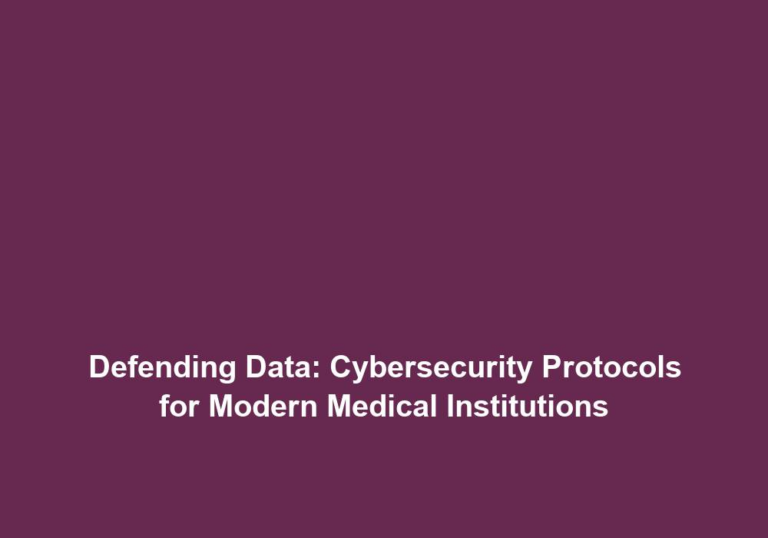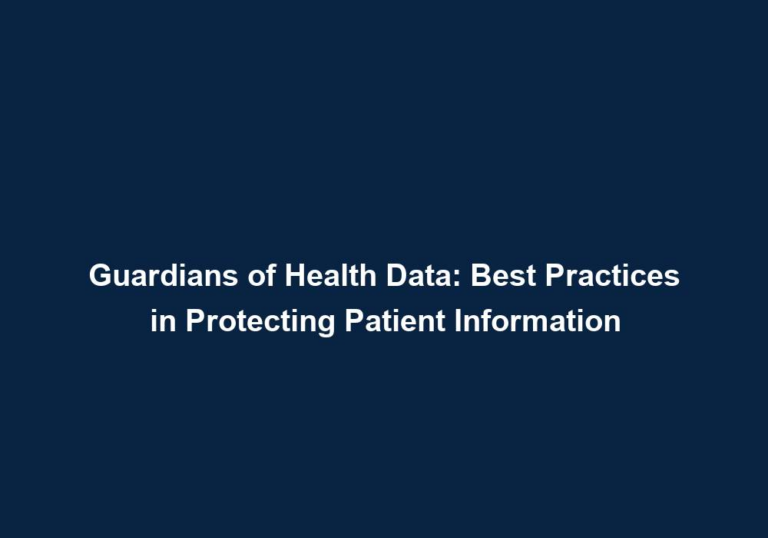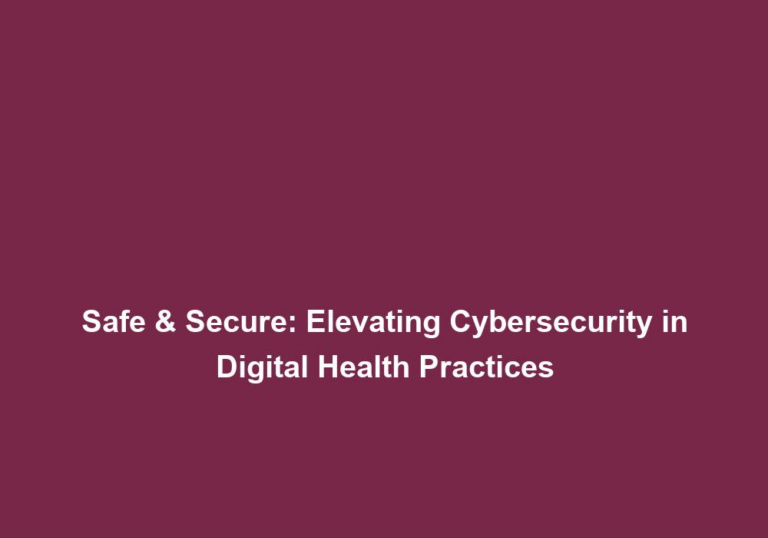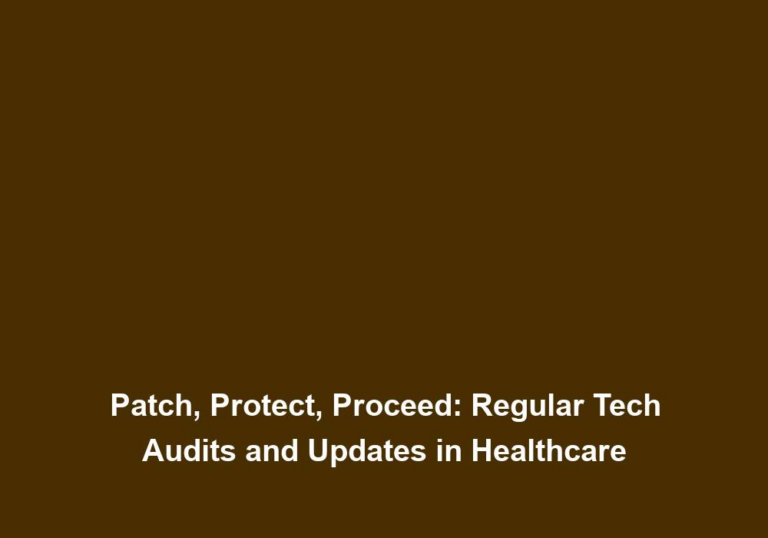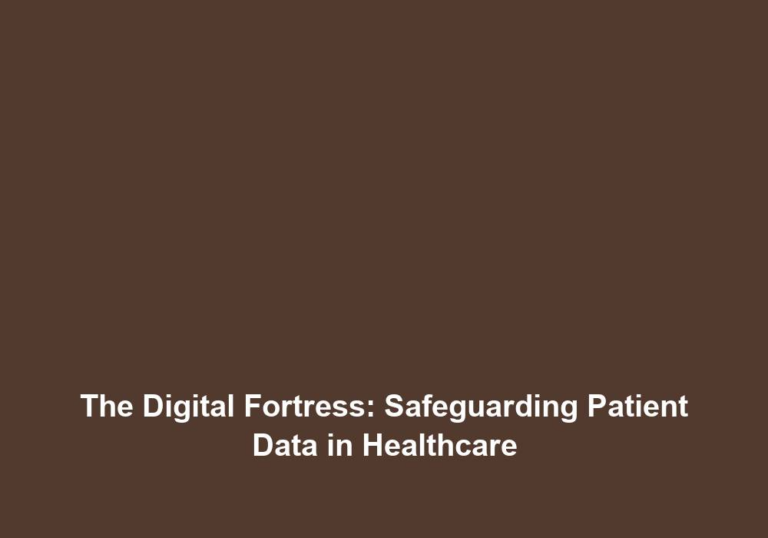Staying Updated: Regular Tech Audits for a Safer Healthcare Environment
In today’s fast-paced world, technology plays a crucial role in the healthcare industry. From medical devices to digital records, advancements in technology have enhanced patient care, improved efficiency, and increased accessibility to healthcare services. However, with these benefits come potential risks and vulnerabilities that can compromise patient safety and the security of sensitive data.
To ensure a safer healthcare environment, regular tech audits are essential. These audits involve a comprehensive review of the technology infrastructure and systems in place to identify any weaknesses, gaps, or potential areas of improvement. By conducting regular audits, healthcare organizations can proactively address any security concerns, minimize risks, and stay updated with the latest industry standards.
Why are Tech Audits Necessary?
- Identifying Vulnerabilities: The healthcare sector is a prime target for cybercriminals due to the valuable information it holds. Tech audits help identify vulnerabilities in the network, systems, and applications, allowing healthcare organizations to implement necessary safeguards and protect against potential data breaches.
Regular tech audits not only help in identifying vulnerabilities but also provide an opportunity to assess the effectiveness of existing security measures. By conducting thorough penetration testing and vulnerability assessments, healthcare organizations can identify potential weak points in their network infrastructure that could be exploited by hackers. This allows them to take proactive measures to strengthen their security controls and prevent unauthorized access to sensitive data.
- Compliance with Regulatory Standards: Healthcare organizations are subject to various industry regulations, such as the Health Insurance Portability and Accountability Act (HIPAA) in the United States. Regular tech audits ensure compliance with these standards and help avoid hefty fines or legal consequences.
Compliance with regulatory standards is crucial for healthcare organizations to maintain trust and confidence among patients. Regular tech audits provide an opportunity to assess the organization’s adherence to these standards and identify any areas of non-compliance. By addressing these issues promptly, healthcare organizations can avoid potential legal consequences and reputational damage.
- Evaluating Technological Infrastructure: Technology is constantly evolving, and healthcare organizations must adapt to the latest advancements. Tech audits evaluate the existing technological infrastructure, identifying outdated systems or equipment that may pose risks or hinder efficiency.
Regular tech audits allow healthcare organizations to stay updated with the latest advancements in technology. By evaluating their technological infrastructure, they can identify outdated systems or equipment that may be vulnerable to security breaches or may not support the organization’s evolving needs. This enables them to make informed decisions regarding upgrades or replacements, ensuring a secure and efficient technology environment.
- Enhancing Data Security: With the increasing reliance on electronic health records (EHRs) and interconnected systems, data security is of paramount importance. Tech audits help identify potential loopholes in data security systems, allowing organizations to implement encryption, access controls, and other measures to protect patient information.
Data security is one of the primary concerns in the healthcare industry. Regular tech audits provide an opportunity to assess the effectiveness of existing data security measures and identify any potential vulnerabilities. By implementing encryption, access controls, and other data protection measures, healthcare organizations can ensure the confidentiality, integrity, and availability of patient information.
Key Components of a Tech Audit
A comprehensive tech audit should cover various components to ensure a thorough evaluation. Some key areas to consider include:
1. Network Security
- Assessing the network infrastructure, including firewalls, routers, and switches, to ensure they are adequately secured and configured.
Regular tech audits should include a thorough assessment of the network infrastructure to ensure that all critical components, such as firewalls, routers, and switches, are adequately secured and configured. This involves reviewing the network architecture, access controls, and user authentication mechanisms to identify any potential vulnerabilities. Additionally, organizations should also evaluate the effectiveness of encryption protocols to protect sensitive data during transmission.
- Reviewing network access controls, user authentication mechanisms, and encryption protocols.
Network access controls and user authentication mechanisms play a crucial role in preventing unauthorized access to the network. Regular tech audits should assess the effectiveness of these controls and mechanisms, ensuring that only authorized individuals have access to the network resources. Additionally, organizations should also review the encryption protocols in place to protect data transmitted over the network from interception.
- Conducting penetration testing or vulnerability assessments to identify potential weak points that could be exploited by hackers.
Penetration testing and vulnerability assessments are essential components of a comprehensive tech audit. These tests simulate real-world attacks to identify potential weak points in the network infrastructure that could be exploited by hackers. By conducting regular penetration testing and vulnerability assessments, healthcare organizations can proactively identify and address any vulnerabilities, minimizing the risk of data breaches.
2. System Updates and Patch Management
- Evaluating the organization’s patch management process to ensure that software, applications, and operating systems are up to date with the latest security patches.
Regular tech audits should include an assessment of the organization’s patch management process to ensure that all software, applications, and operating systems are up to date with the latest security patches. Outdated software and systems can pose significant security risks, as they may contain known vulnerabilities that can be exploited by attackers. By ensuring timely updates and patches, healthcare organizations can minimize the risk of security breaches.
- Verifying the effectiveness of system update protocols and assessing any potential risks associated with outdated software.
In addition to evaluating the patch management process, regular tech audits should also verify the effectiveness of system update protocols. This involves assessing the organization’s procedures for deploying updates and patches, ensuring that they are timely and comprehensive. Furthermore, audits should also identify any potential risks associated with outdated software, such as unsupported operating systems or applications, and recommend appropriate mitigation measures.
3. Physical Security Measures
- Inspecting physical access controls, such as surveillance cameras, key card systems, and restricted access areas, to prevent unauthorized entry and protect critical infrastructure.
Regular tech audits should not only focus on digital security but also assess the physical security measures in place. This involves inspecting physical access controls, such as surveillance cameras, key card systems, and restricted access areas, to prevent unauthorized entry and protect critical infrastructure. By ensuring robust physical security measures, healthcare organizations can minimize the risk of unauthorized access to sensitive areas and equipment.
- Reviewing procedures for equipment disposal, ensuring that sensitive data is securely erased before devices are discarded.
Proper equipment disposal is crucial to prevent unauthorized access to sensitive data. Regular tech audits should review the organization’s procedures for equipment disposal, ensuring that all sensitive data is securely erased before devices are discarded. This includes proper data wiping or destruction methods to ensure that no residual data remains on the devices.
4. Data Backup and Disaster Recovery
- Assessing backup systems and procedures to ensure that critical data is regularly backed up and can be efficiently restored in the event of a system failure or data breach.
Regular tech audits should include an assessment of the organization’s backup systems and procedures to ensure that critical data is regularly backed up and can be efficiently restored in the event of a system failure or data breach. This involves reviewing the backup frequency, storage locations, and recovery procedures to ensure that all critical data is adequately protected.
- Testing the effectiveness of disaster recovery plans to minimize downtime and ensure business continuity.
Disaster recovery plans are essential for minimizing downtime and ensuring business continuity in the event of a disaster or system failure. Regular tech audits should assess the effectiveness of these plans by conducting simulated disaster scenarios and evaluating the organization’s response. By identifying any weaknesses or gaps in the disaster recovery plans, healthcare organizations can make necessary improvements to minimize the impact of potential disruptions.
5. Training and Awareness Programs
- Reviewing the organization’s training programs to ensure that employees are educated on cybersecurity best practices, such as identifying phishing attempts, using strong passwords, and reporting suspicious activities.
Regular tech audits should assess the organization’s training programs to ensure that employees are adequately educated on cybersecurity best practices. This includes training on how to identify and prevent phishing attempts, the importance of using strong and unique passwords, and the process for reporting suspicious activities. By promoting a culture of cybersecurity awareness among employees, healthcare organizations can minimize the risk of human errors or negligence that could lead to security breaches.
- Assessing the effectiveness of awareness campaigns in promoting a culture of cybersecurity throughout the organization.
In addition to training programs, regular tech audits should also assess the effectiveness of awareness campaigns in promoting a culture of cybersecurity throughout the organization. This involves evaluating the organization’s communication strategies and materials, such as posters, newsletters, and email reminders, to ensure that they effectively convey key cybersecurity messages. By fostering a culture of cybersecurity awareness, healthcare organizations can create a strong line of defense against potential threats.
Benefits of Regular Tech Audits
Regular tech audits offer numerous benefits beyond improved cybersecurity. Some of these advantages include:
-
Cost Savings: Identifying and addressing potential security vulnerabilities early on can prevent costly data breaches or system failures. By conducting regular tech audits, healthcare organizations can proactively identify and mitigate potential risks, minimizing the financial impact of security incidents.
-
Enhanced Patient Trust: By demonstrating a commitment to cybersecurity and data privacy, healthcare organizations can build trust with patients, fostering stronger patient-provider relationships. Regular tech audits provide assurance to patients that their sensitive information is being protected, enhancing their confidence in the healthcare provider.
-
Compliance with Industry Standards: Regular audits ensure compliance with industry-specific regulations and standards, reducing the risk of legal consequences and reputational damage. By staying updated with the latest industry standards and regulations, healthcare organizations can demonstrate their commitment to maintaining the highest level of data security and privacy.
-
Improved Efficiency and Productivity: Assessing the technological infrastructure allows organizations to identify areas where efficiency can be improved, leading to streamlined workflows and enhanced productivity. Regular tech audits help healthcare organizations identify outdated systems or processes that may be hindering efficiency and recommend appropriate upgrades or optimizations.
In conclusion, regular tech audits are crucial for maintaining a safer healthcare environment. By identifying vulnerabilities, ensuring compliance, and evaluating the technological infrastructure, healthcare organizations can proactively address security concerns and protect sensitive patient data. Investing in regular audits not only enhances cybersecurity but also improves efficiency, productivity, and patient trust. Stay updated with the latest industry standards and prioritize tech audits to safeguard the future of healthcare.

